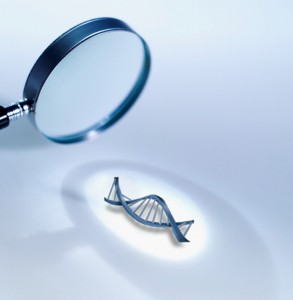
Earlier this month, researchers at Washington University School of Medicine (St. Louis) and at the European Molecular Biology Laboratory (Heidelberg, Germany) reported a new type of DNA profile: DNA profiles from human gut bacteria. The researchers analyzed microbial DNA in 252 stool samples from 207 individuals, focusing on 101 species of microbes commonly found in the intestine. They found many types of DNA differences, the sort of differences that generate unique DNA profiles. For 43 subjects, the researchers collected two stool samples one month to six months apart. The scientists found little variability in the microbial DNA. In short, they discovered variability in DNA profiles between subjects and consistency in DNA profiles in subjects over time.
“The microbial DNA in the intestine is remarkably stable, like a fingerprint,” said George Weinstock, associate director of The Genome Institute at Washington University. “Even after a year, we could still distinguish individuals by the genetic signature of their microbial DNA.”
It’s not immediately obvious how this discovery could be incorporated into a crime story. But, if you can do it, then consider yourself on the cutting edge.
A more apparent application of bacterial DNA profiling to mystery stories is found in the discoveries of Noah Fierer and his colleagues at the University of Colorado in Boulder. They found that a typical human hand shelters about 150 species of bacteria. The types of bacteria living on skin vary greatly. In a 2008 study, they identified more than 4,700 different bacteria species living on the hands of 51 people. Yet only five species lived on the skin of every participant of the study.
In 2010, the researchers reported that computer users leave DNA traces of bacteria on computer mice and keyboards. These DNA traces more closely match the DNA of bacterial colonies that inhabit the hands of the individual who used the computer, compared with bacterial DNA traces of randomly selected people. The researchers obtained useful samples of bacterial DNA two weeks after a person touched computer equipment.



